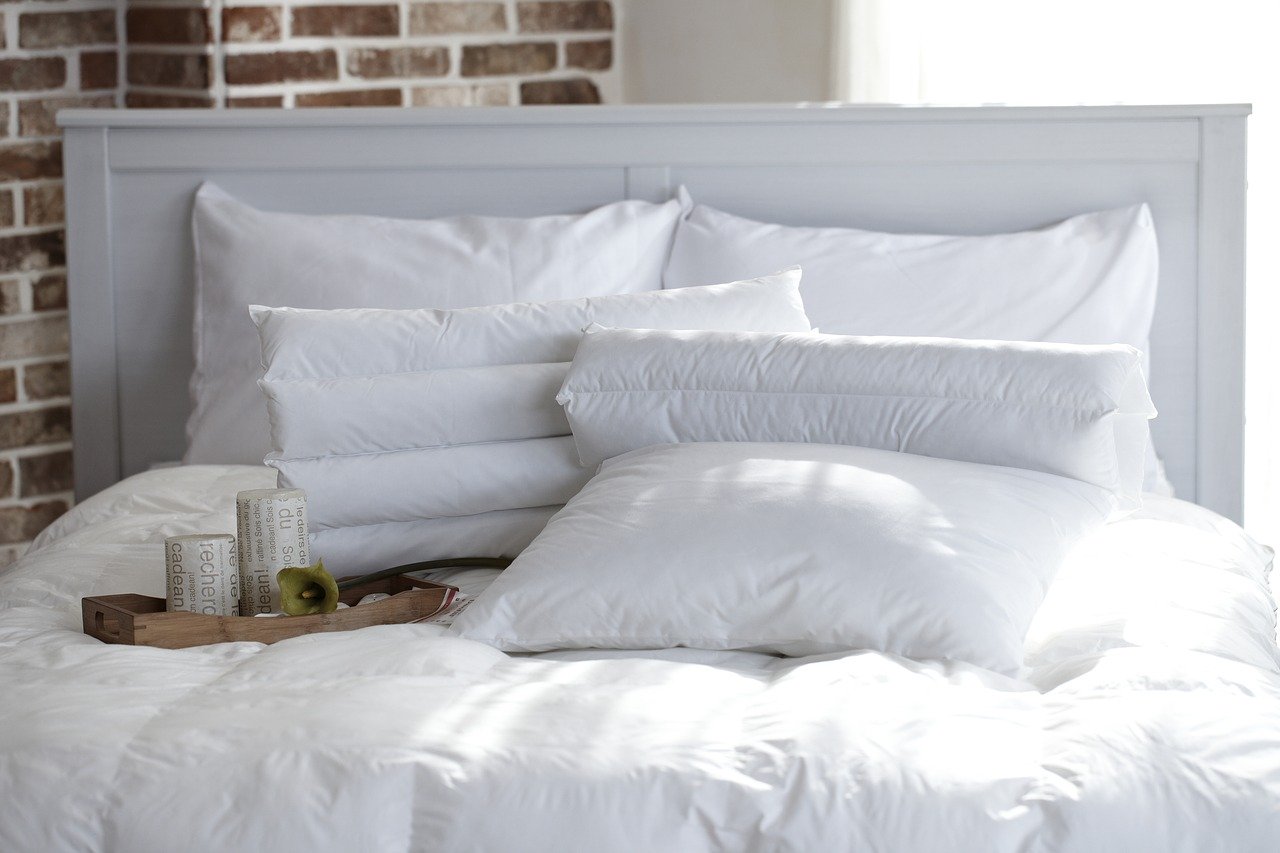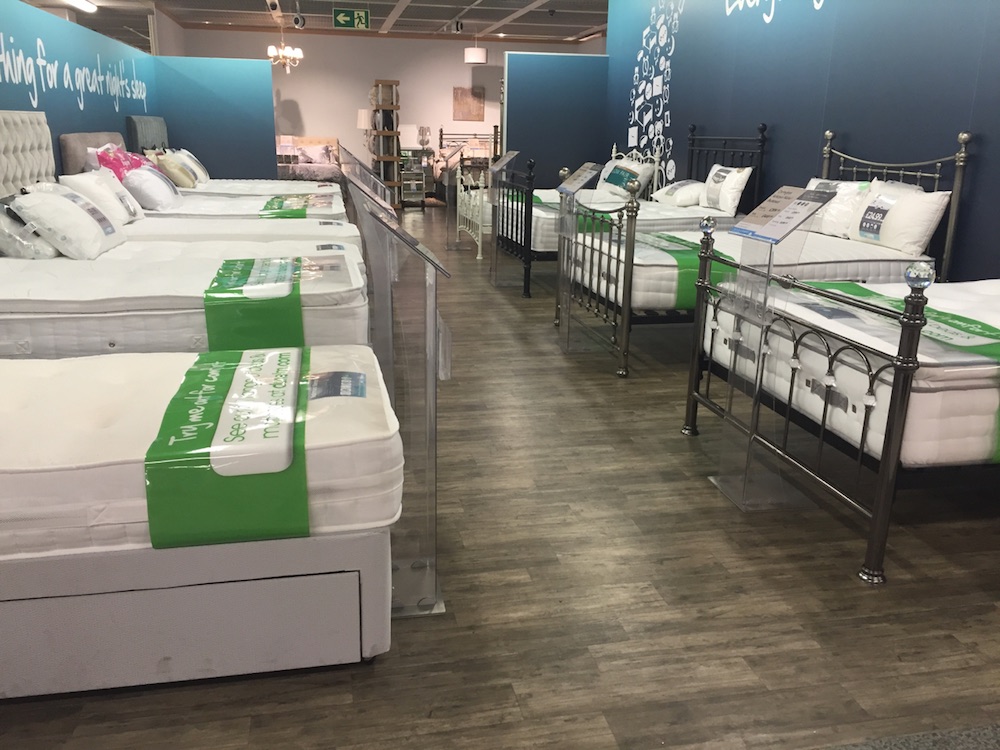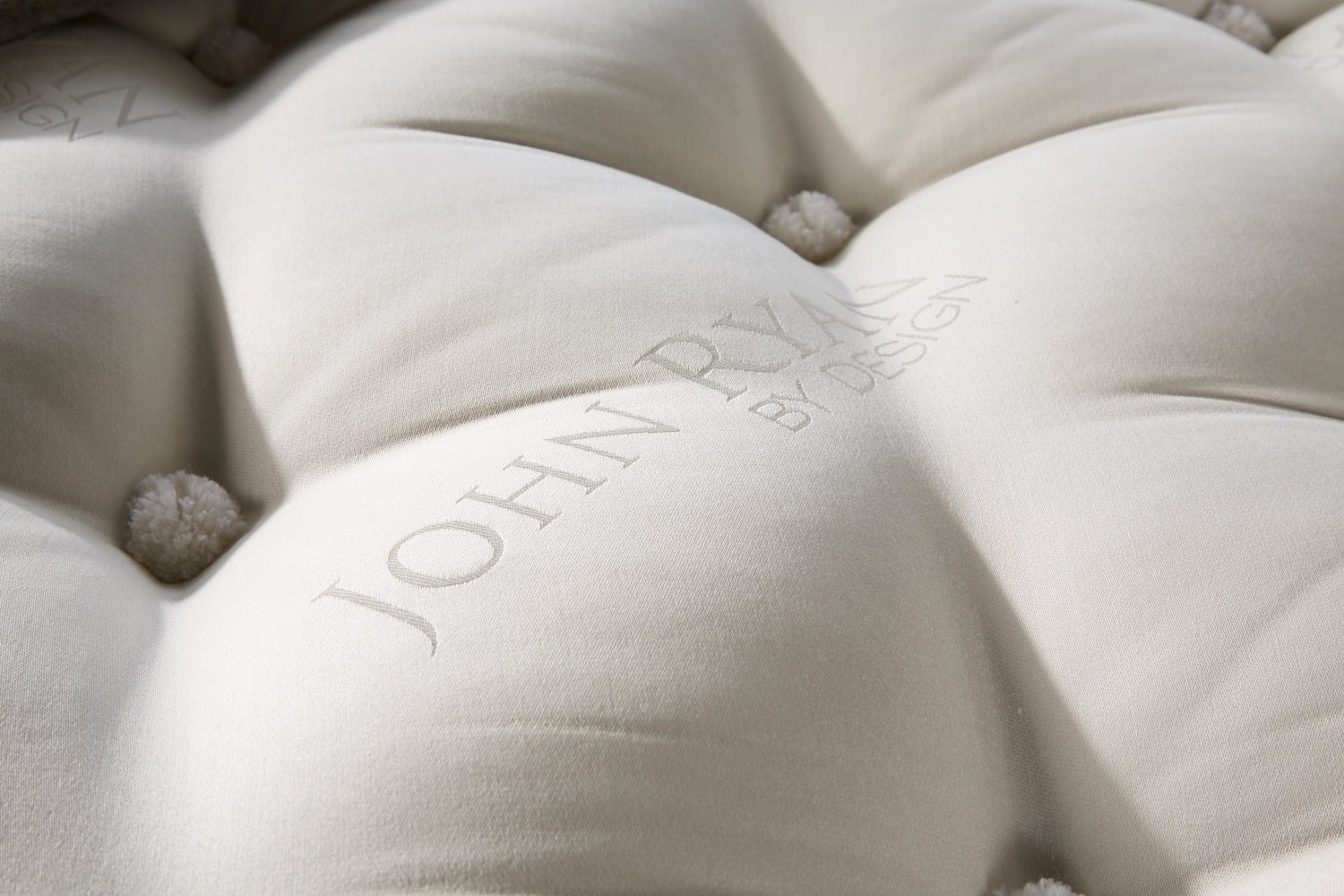Mattress Upholstery
June 2020Quilting methods on mattresses explained
Updated 2020: Quilting is by far the most prolific method of mattress cover finishes. It is used the most frequently as it offers the manufacturer and retailer the opportunity to provide more of a ‘difference’ between mattresses. Even though the insides will be pretty much be identical. Once you steer away from looking at a design and how the mattress physically looks (be in no doubt they can be made to look very appealing indeed) and concentrate your efforts on what is actually inside, you will be far less inclined to make a mistake.

Quilting should be considered as the last component of a mattress. Don’t be swayed by fancy patterns as you should know by now its what’s inside the mattress that count! Given that its the first thing you’re going to see when buying a new mattress you really do need to understand what constitutes a good mattress cover.
What is mattress cover quilting?
Quilted mattress covers are those that have been stitched to give a padded design to the top cover of a mattress. This applies to the outer surface of the fabric. Fabrics obtained by the manufacturer from various sources can come in either pre-quilted or plain. Many manufacturers like to buy in their fabrics ‘plain’ which gives them the opportunity to produce short runs of various designs. The quilting machines they use can be altered at a flick of a switch to produce completely different designs within minutes.
Mattress quilting gives the mattress cover a nicer finish both to look at and to feel. However, it also acts as a deterrent from asking what’s actually inside the mattress. Which if you’ve read other parts of our site, you will know is essential to find out before buying a new mattress whether online or in a shop.

There are just three methods of mattress quilting
Deep quilted
This process involves making quite a deep surface layer by stitching the fabric to polyester sheeting and other wadding to create a surface that looks deep and sumptuous. This is the process that will more often than not be used on a mattress to be ‘perceived’ by you as mid-range. This will be laid on to further elements of upholstery (usually polyester) to give a further element of substance.
Light quilted or micro quilted
This process is used for budget or economy models. The outer fabric is quilted to a minimal layer of polyester or at the very worst a recycled material ‘Polypad’. To add an element of comfort there may be a minimal layer of polyester between this ‘top’ and the springs, but the actual weight of polyester used will be in the region of 600gsm or 800gsm. You can read more on GSM in mattresses here.
The actual quilting pattern on these models is the giveaway to the value (as it will usually be basic diamond-shaped or circular-shape) using the least amount of thread to speed up the quilting process.
Tack and jump
This is another process to add visual value to a not so good product. Whereas in Deep Quilting you can follow the pattern continuously, this method gives separation to the design. The machine will stitch a section (tack) and raise (jump) to start another section. Descriptions that describe a mattress with ‘concealed tufting’ will also be utilising this method.

Like Deep Quilting, this is a technique to give you the impression of a well-made mattress. When viewed in the store it is more likely you are going to be basing your selection on how a mattress looks rather than how it is going to perform. Incidentally, certain ‘branded mattresses’ shows a mattress that utilises this method. We have seen that when the layers are peeled back the whole top section is in one piece held together by the tacks. The ‘benefit‘ of this type of finish is that there are literally hundreds and hundreds of design combinations which is why it is a popular method of construction by nearly all major mattress manufacturers. It enables them to be able to sell ‘exclusive’ models to a variety of retailers. The difference is only in the fabric and the design of the tack and jump. The insides will, usually, be the same!

Don’t be fooled by rows of deep quilted mattresses. It’s whats inside them that really counts and what retailers don’t want you to know!
What’s the best mattress cover?
When it comes to mattress covers and quilting there certainly are winners and losers which you need to carefully look at.
- Damask / Viscose (Plant-based) is the best quality
- Quilted polyester covers mid range
- Stitchbond the lowest quality

Most mattress manufacturers that use quilted covers are doing so to reduce costs and manufacturing complexity. Quilted covers are nearly always polyester-based, stretchy and easy to quickly produce and then machine stitch onto a mattress to cover it. Stitchbond will only be found on those bottom end mattresses. It neither feels nor looks nice and is usually a recycled synthetic fibre made from old jumpers, socks and clothing that’s been repurposed.
For example, you may see space-aged fabrics with all sorts of hypoallergenic properties or heat reduction claims. But did you know that these are nearly always 100% polyester? That by its very synthetic nature polyester is hypoallergenic and nothing to do with natural breathable fibres. Surprising eh! We’re not saying that a polyester cover is bad but it shouldn’t be costing a premium when there are far better covers to choose from.
The following mattress fabric examples all contain different amounts of polyester:
- Outlast
- Coolmax
- Slumbercloud
- Airflow
In our experience, the best mattress cover is a Viscose Plant-based Damask that has been woven. This fabric is then usually hand-stitched to a pocket spring mattress before it is tufted.
Not only is this far more breathable than polyester covers but it also is far more durable. It’s woven not just quilted so has a far nicer feel to it. The reason why high-end beds use quality Damask is that it will stay like new far longer than a synthetic cover. It’s also much harder to upholster with so when you see it being used on a mattress, you know some skill has gone into making that model.

Choosing the best mattress cover
One final word on choosing the best mattress cover. Whilst the mattress cover will give an indication of the quality of mattress you’re looking at, you really need to dig deeper to know exactly what’s inside the mattress. The mattress cover, particularly if quilted like 90% of all mattresses can hide a thousand sins inside! A damask viscose cover will indicate a higher quality mattress but you need to know the following to truly know whether a mattress is suitable and worth the price being asked for it.
- Spring type, count, & gauge (Spring tensions should always be based on your bodyweight)
- The grams per square meter of all fibres inside including densities of foams or fillings
- The mattress detailing ie is it hand made, machine-made and what quality indicators does it have?
- Is it one or two-sided? (You simply must read our guide on that here!)
Summary
The finish and look of the mattress are a retailer’s best friend, knowing that it is this look that will sway you towards a particular model without giving too much thought as to what is actually on the inside!
If you keep in mind that all quilted mattresses can be deemed to be a cheap method of manufacturing you will not go far wrong. This is not to say that all tufted models are ‘better’. They too can be just bags of springs, or all fur coat no knickers, as my gran would say! The message here is to be aware of what you are looking at and not be taken in by the look. Be careful out there and if in doubt give our friendly team a call on 0161 437 4419 for more advice.

Dreaming of the perfect nights sleep?

Ask us a question
There are over 6000 questions and answers submitted by you on all questions about mattresses and bed problems. Enter a keyword such as Vi Spring, John Lewis beds, bad back or Memory Foam and see if your question has already been answered.
If you can’t find an answer in knowledge hub, ask a new question. We aim to respond to all questions within one working day.
Newsletter
Enter your email to join our newsletter. We’ll send you occasional news and mattress expertise.
